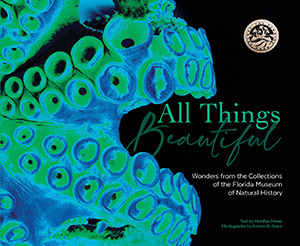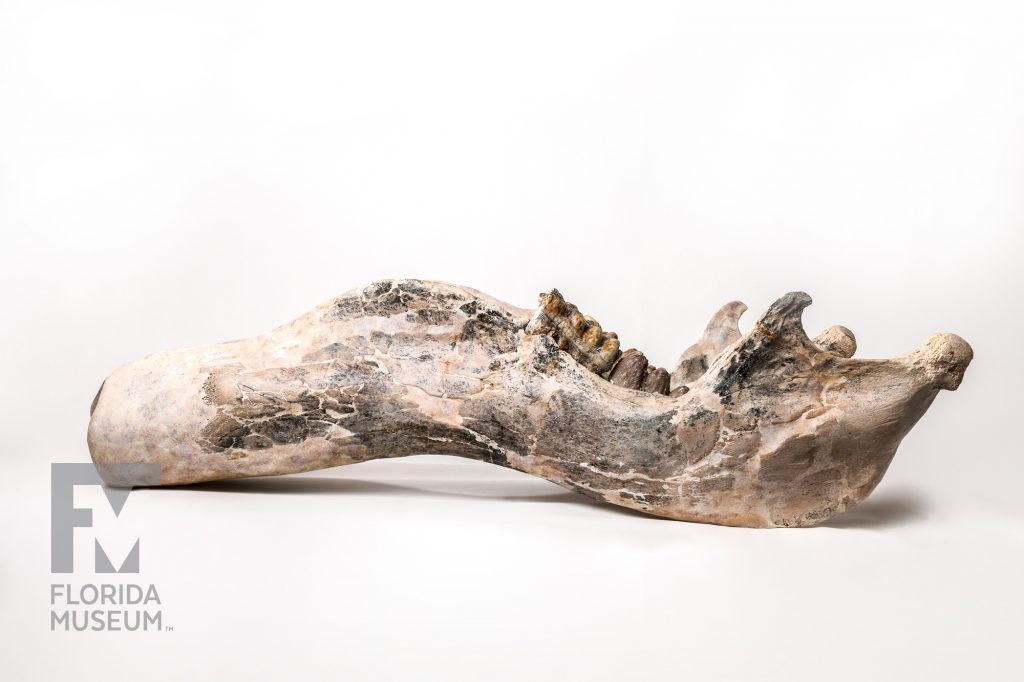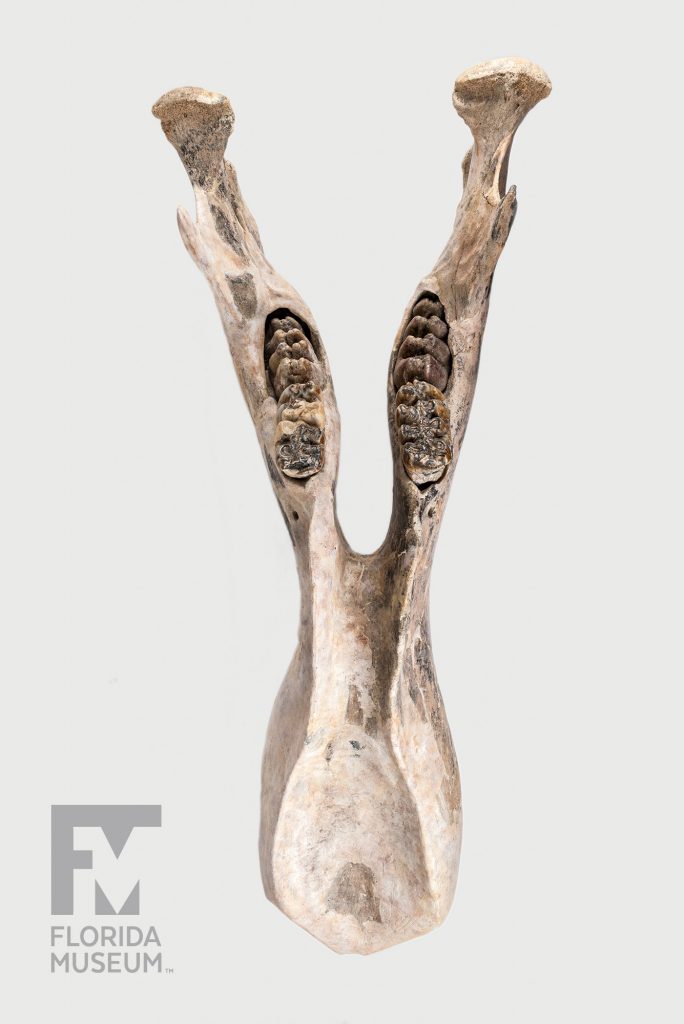Shovel-tuskers were among the largest proboscideans (related to elephants) to live in North America. Paleontologists once believed they used their huge shovel-shaped jaws and tusks to scoop up aquatic plants, but Museum research suggests multiple purposes, including digging soil and scraping bark off trees.
Summary
Britt’s Shovel-tusker (Amebelodon britti)
From Marion Co., Florida
Lived ~6 million years ago
Collection
Story
Among the many types of extinct elephant relatives we find in Florida, the shovel-tuskers are perhaps the most bizarre. They have these huge lower tusks that appear to resemble shovels, however analysis by Florida researchers has determined that they used these lower tusks for many purposes, including digging and scratching bark off of trees. This specimen, along with one other jaw, was found in Marion County during the construction of a racetrack for thoroughbred horses. This particular species, Amebelodon britti, is the largest-known land animal to have ever lived in Florida.
Richard Hulbert
Collection Manager, Vertebrate Paleontology
Florida Museum of Natural History
Exhibit
On display Sept. 23, 2017-Jan. 7, 2018, Rare, Beautiful & Fascinating: 100 Years @FloridaMuseum celebrated the Museum’s rich history. Each Museum collection was asked to contribute its most interesting items and share the stories that make them special. Though the physical exhibit is closed, this companion website remains online, providing an opportunity to experience the Florida Museum’s most treasured specimens.
Exhibit Area: Introduction
 Want to see more? Explore more than 300 breathtaking color photos of plants, animals, fossils and cultural heritage materials from the Florida Museum of Natural History’s collections in the award-winning book All Things Beautiful available from the University Press of Florida.
Want to see more? Explore more than 300 breathtaking color photos of plants, animals, fossils and cultural heritage materials from the Florida Museum of Natural History’s collections in the award-winning book All Things Beautiful available from the University Press of Florida.
*This title was accurate at the time the exhibit was on display in 2017. Please visit the collection website to verify current staff and student information.


